Electrolytic Marking
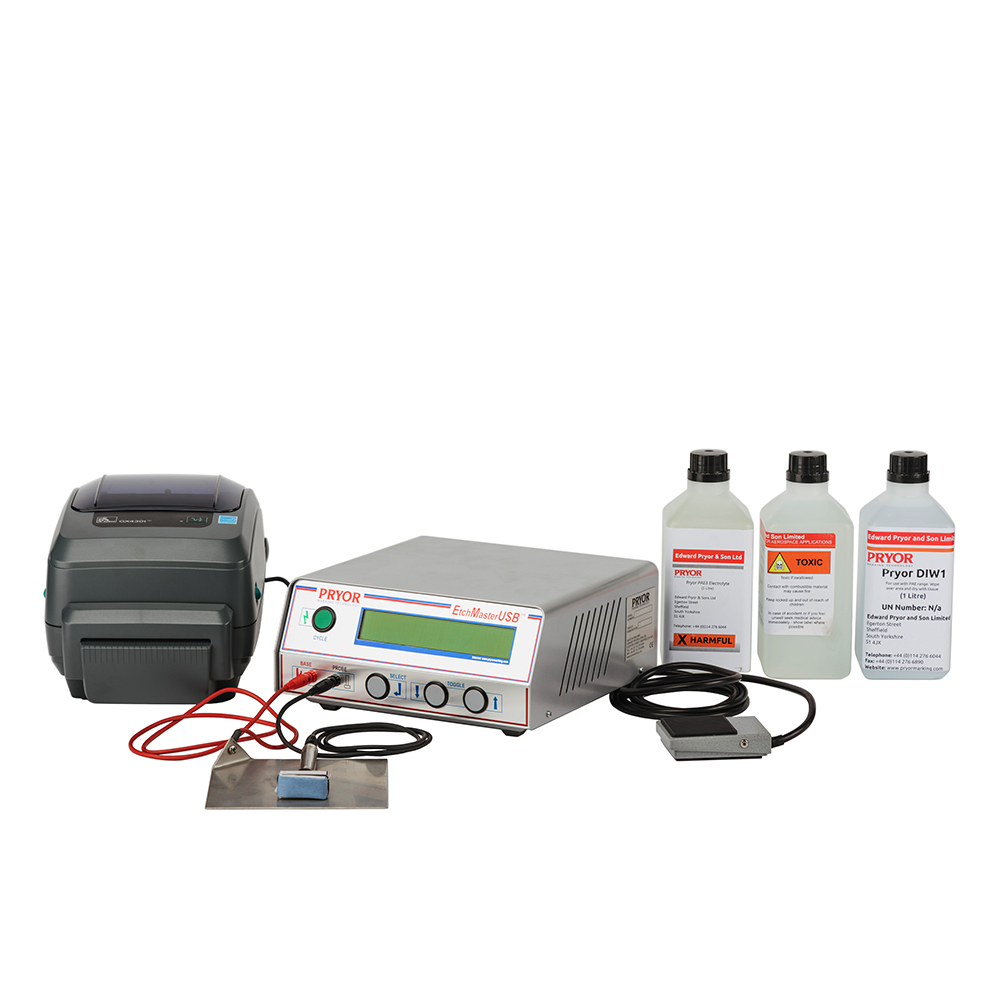
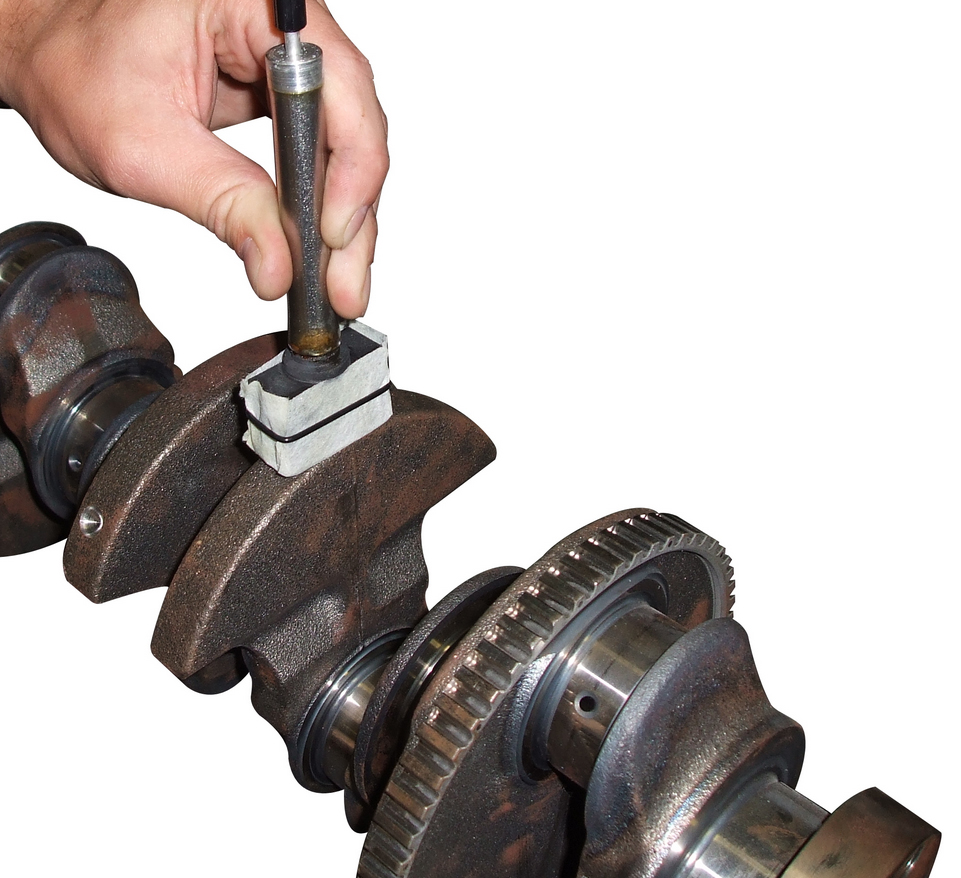
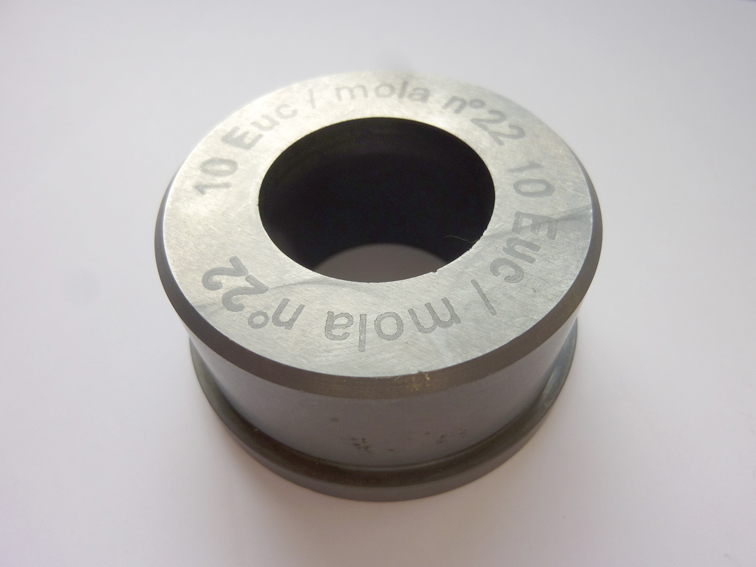
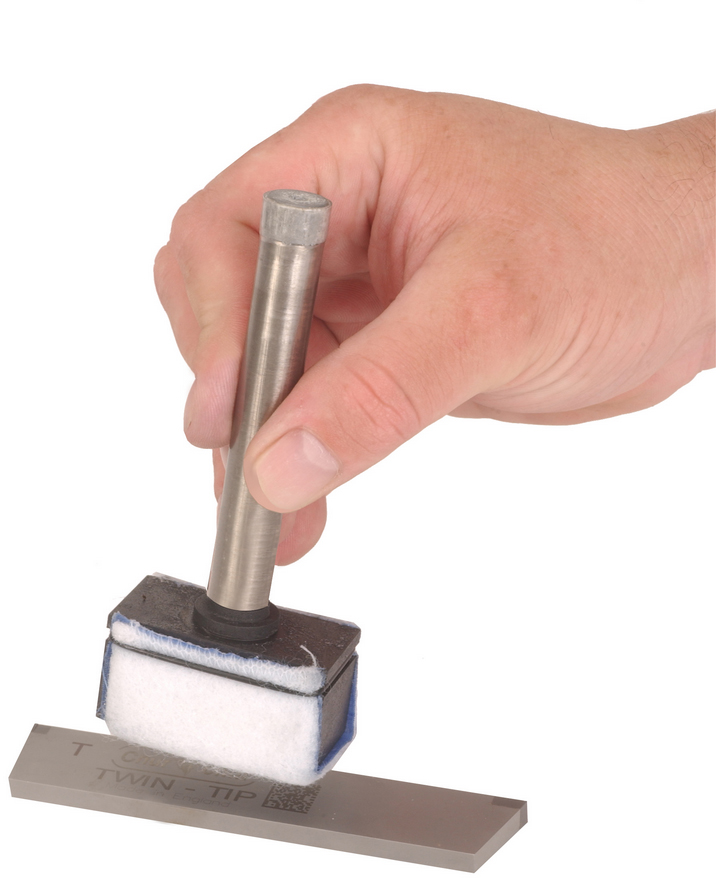
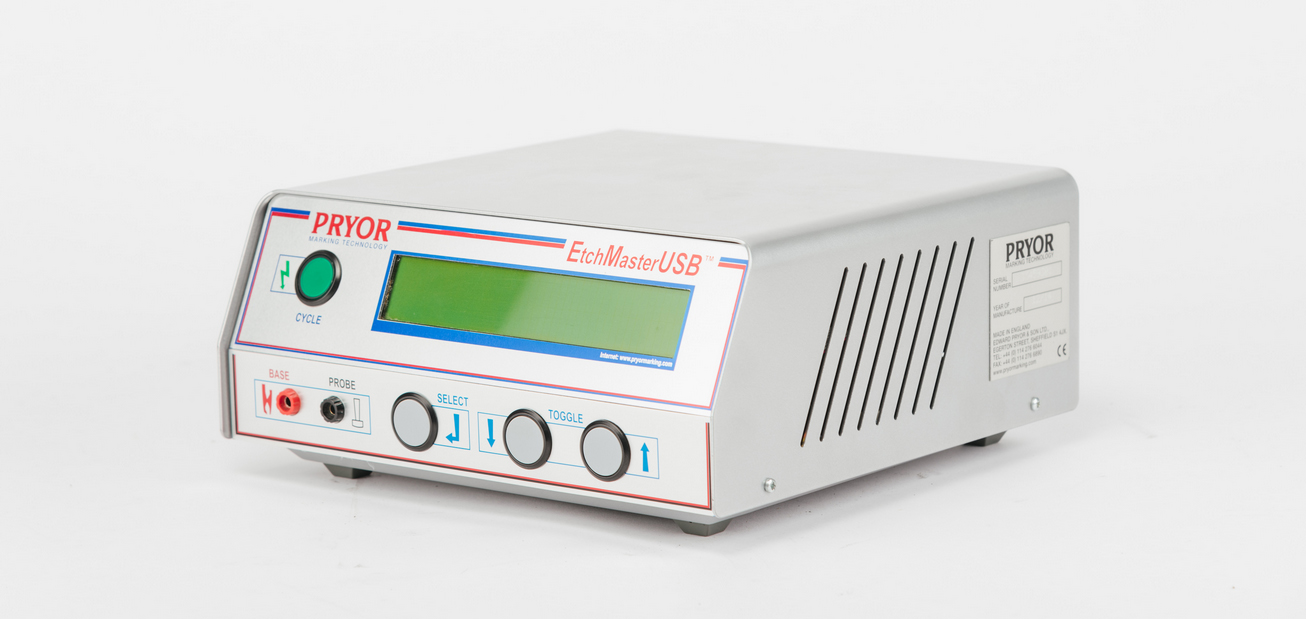





Metal markers
Electrolytic marking fits well with almost all good electrical conducting materials. It is mainly used for marking on stainless steel, steel, aluminum and hard metals.
The electrolytic marking unit guarantees high quality marking regardless of the hardness of the marking surfaces.
The marking process takes place by passing a low voltage and low intensity electric charge from an electrode, typically a graphite block equipped with an absorbent pad (positive pole) at the marking piece (negative pole). The passage of the electric charge must be done by engraving on a semipore matrix, made conductive by a special electrolytic liquid.
The electrochemical action causes the design on the die to be marked on the surface of the workpiece.
The system operates both with DC (DC) and AC (AC).
With a direct current you get a clear mark, you can also mark non-ferrous materials (brass, copper, pond, silver, aluminum, etc.). With alternating current, you can get a dark mark on ferrous materials (steel, iron, tool steels, etc.).
This marking mode is suitable when materials surfaces are not deformed, for example, for marking surfaces with narrow tolerance. Compatibility with Datamatrix technology.
Electrolytic liquids are not harmful, so they are safe to use daily.


